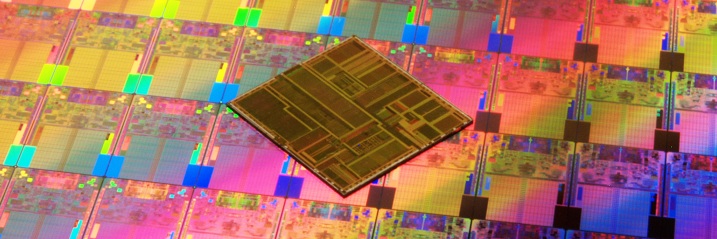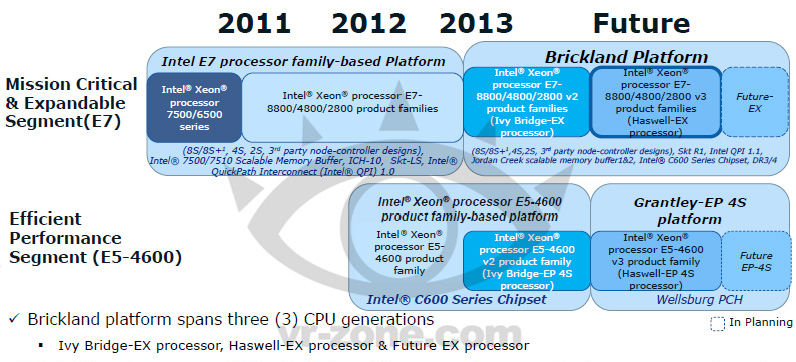Intel has the server market split into two segments, the EX processors in the E7 series for critical applications and the EP processors in the E5 series for high efficiency. The first information on the successors for each segment has appeared, where the critical upgrade gets the ironic name Brickland.
The current Romley platform uses E5 series processors in the Sandy Bridge-EP family with up to eight cores and ran into several delays before launch. Due to probloems with the bundled chipset C600, also known as X79 in retail. Romley supports up to four processors on one board and will support Ivy Bridge-EP that is due in H1 2013, with up to ten cores per processor.
The successor to Romley is code-named Grantley-EP that is accompanied by the new chipset Wellsburg PCH. The news are definitely interesting, the Thunderbolt interface comes integrated for once. There is also support for DDR4, with clock frequencies up to 2400 and 3200 MHz. Considering Ivy Bridge-EP won’t launch until next year, the new platform Grantley-EP will most likely not see the light of day before 2014.
Boxboro-EX is the platform Intel uses for so called ”Mission Critical” applications, where stability is of the essense. The processors has so called RAS functions (Reliability, Availability and Serviceability) that can prevent a processor from crashing and recover from critical errors. The platforms has been around for a couple of years now and should be repalced next year, with Ivy Bridge-EX.
The successor to Boxboro will be Brickland, which was perhaps not the best choice of name for a server platform like this one. It will support up to eight processors on a single motherboard through the next generation QPI bus, version 1.1. The processors in Brickland will support ECC REG DDR3 memory at 1600 MHz, but also the new DDR4 standard with frequencies at 2133, 2400 and 3200 MHz.
Brickland is slated for 2013 and will be longlived since it will support three generation of processors: Ivy Bridge-EX, the coming Haswell-EX and Broadwell-EX, which is shrink of Haswell from 22 nanometer to 14 nanometer. The plans are to launch the Brickland successor four years later, with support for the new Skylake architecture, which we know very little about today. Plans this far into the future should always be considered with a pinch of salt though.
Intel is keeping its momentum even though AMD is slipping behind and the support for DDR4 is highly welcome in servers, which is hungrier than ever for bandwidth. Besides the higher clock frequencies DDR4 brings a point-to-point topology, which means each memory module acts as its own memory channel. It looks like 2014 will be the year for DDR4 to make an entrance, but retail is yet to be decided.
Source: VR-Zone





